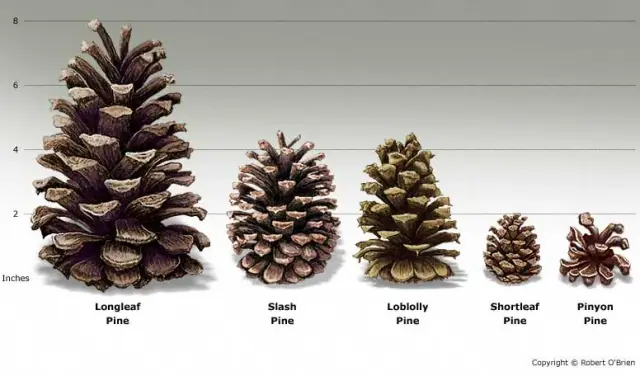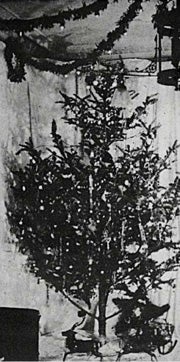
Houseplants are having a resurgence in popularity, and there is a lot of information about growing and care. One of my favorite authors, Peter McHoy, has been writing books on houseplants for many years. His recent “The Complete Houseplant Book: Identifying, Choosing and Maintaining Plants for Your Home” (Anness Publishing, 2015) would be a good title for your gardening shelf.
Just as in outdoor gardens, you should consider the needs of each plant you choose, since growing conditions are not the same for all. Those to be informed about include light and watering, types of containers, soils, plant diseases and insects. This column cannot possibly address all these issues in detail, so I will recommend some helpful websites.
Water and light are keys for success. Over-watering, especially in winter, is the No. 1 killer of houseplants. Since they take in energy from sunlight to produce food, and in winter there is less light, plants need less water at this time of year. Like many animals, in winter plants want more rest than in other seasons.
I water when the soil has dried out in roughly the top one-third of the pot. However, indoor cacti and succulents need less water than an African violet. This is why knowing each plant’s needs is important.
Observe the light in your house, and choose plants that are appropriate for the space. Low-light areas are those where there is no direct sun. Medium or filtered light is where sunshine may be coming through a curtain. Bright light is the where indoor sunlight is the strongest. North-facing windows will likely have the least amount of light, west facing the most.
Determine what the light patterns in your house throughout the day. The places that have the sunlight the longest are the spots for sun-loving plants. And even indoors, sunlight patterns change with the seasons
1. African Violet
Want a pet-friendly houseplant with blooms? Look no further than African Violet. This versatile, hardworking houseplant is right at home with your pets. It comes in a range of purple hues, and it’s low maintenance and thrives without bright light.
2. Air Plant
Tillandsia varieties are modern, cool, and best of all, safe for pets. But beware: Cats and dogs alike will love chewing on their spindly leaves—make sure you keep them out of reach.
3. Aluminum Plant or Watermelon Plant
The variegated gray-and-green leaves of Aluminum Plant make it an attractive option for the home, as well as a great nontoxic plant for cats and dogs alike.
4. Christmas Cactus
Unlike its dangerous holiday counterpart amaryllis, Christmas cactus is thankfully nontoxic to cats and dogs. It may cause intestinal discomfort if ingested, but overall it’s a safer choice than many other festive plants.
5. Some Varieties of Ferns
Identifying ferns can be a bit tricky, as there are several plants with the word “fern” in their name that are not actually part of the Pteridophyta family. True ferns such as Boston and maidenhair (pictured) are fair game for pet-friendly households; beware of toxic misnomers such as asparagus fern, which is actually part of the lily family.
6. Friendship Plant
The friendship plant is named for the ease with which it can be divided and shared—so if you happen to receive such a gift, rest assured it’s safe for your cats and dogs. But beware, pets may be especially drawn to the fuzzy, crinkly leaves.
7. Some Herbs
Indoor herb gardens are an easy, fun way to add fresh flavor to your cooking. But not all herbs are created equal when it comes to pet safety. Standards like lavender and oregano are off-limits, but pets can handle basil (pictured), sage, and thyme.
8. Lace Flower Vine or Chocolate Soldier
Pretty lace flower vine grows best in hanging baskets, out of reach of curious cats and dogs. But should an extra-persistent pet make their way into the pot, they’ll be safe.
9. Lipstick Plant
This quirky plant with blooms that resemble tubes of lipstick is happily safe for cats and dogs alike. A native of the tropics, it thrives in bright light and loves being outside in the warmer months.
10. Parlor Palm
Parlor palm is the perfect solution for pet owners looking to add a small tree. Safe for cats and dogs, it’s also great for beginners.
11. Phalaenopsis Orchid
The ever-common phalaenopsis orchid (the one you’re most likely to see in the floral shop) isn’t harmful to pets. But one thing to watch for: Dogs and cats who love to chew may get into trouble in the potting mix, which contains a large amount of bark.
12. Polka Dot Plant
Polka dot plant is perfect for adding a fun splash of pattern to miniature gardens, terrariums, mixed containers, and more. Available in an array of colors such as white and pink, it’s as versatile as it is whimsical.
13. Prayer Plant or Calathea
Prayer plant, topping out at 6-8 inches, is ideal for small spaces such as bookshelves and end tables. Its red, cream, and green leaves curl up at night, giving it its name. What’s more, it’s one of the easiest houseplants you can grow.
14. Spider Plant
This indoor gardening classic is a staple for many reasons, not to mention it’s a cat- and dog-friendly plant. A fan of both pots and hanging baskets, this happy-go-lucky plant will thrive anywhere indoors.
15. Some Succulents
Many of the most popular succulents—including hens and chicks, echeveria, and rosettes—aren’t problematic, but with so many varieties on the market, it’s best to research each individual plant. Jade, for example, while similar to other succulents, is actually dangerous.
 Every Valentine’s Day, chocolate becomes part of the romantic holiday. Why? Is it because of all the health benefits of chocolate? Is it because it is simply satisfying? Or, is it just the tradition of it all….
Every Valentine’s Day, chocolate becomes part of the romantic holiday. Why? Is it because of all the health benefits of chocolate? Is it because it is simply satisfying? Or, is it just the tradition of it all….























